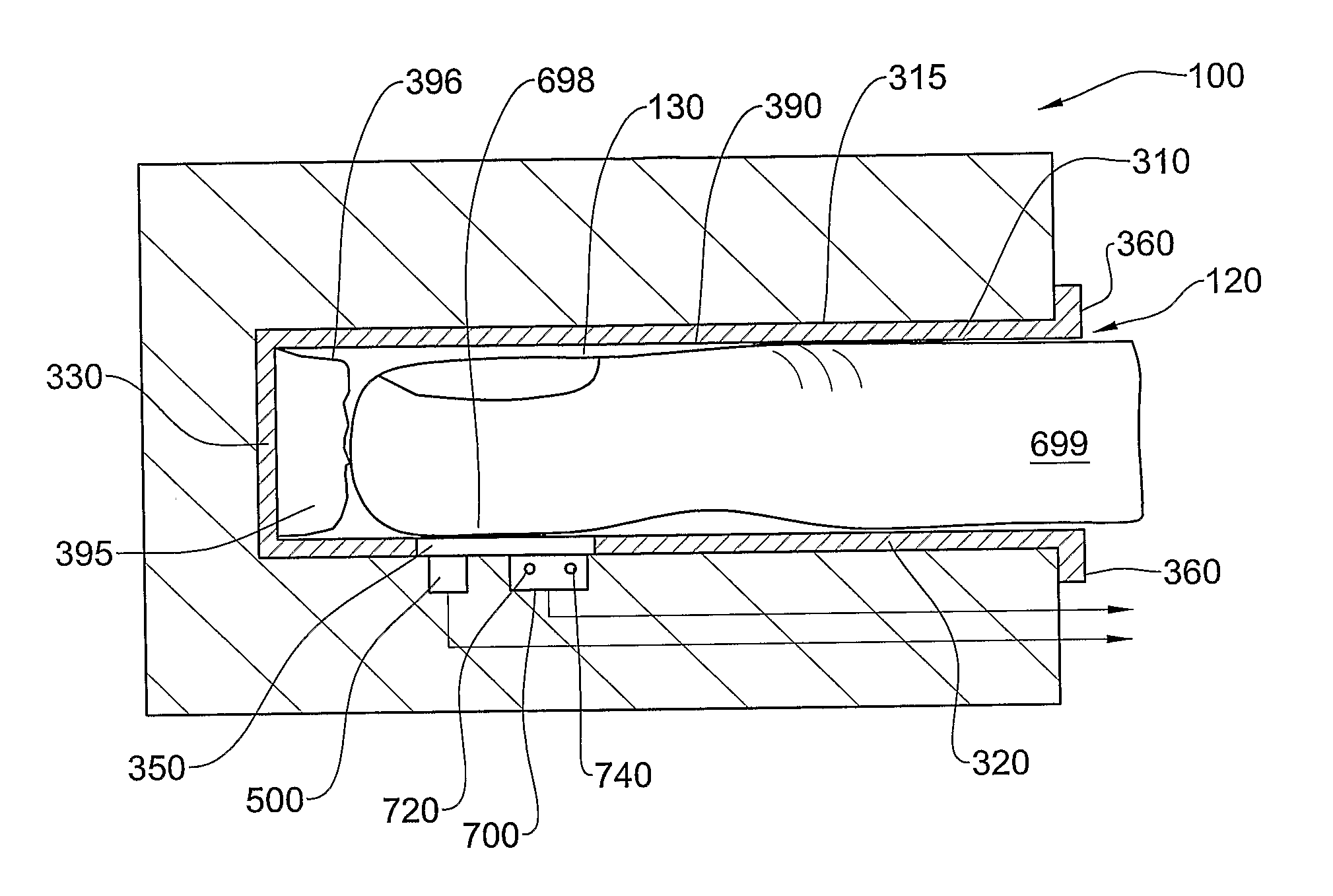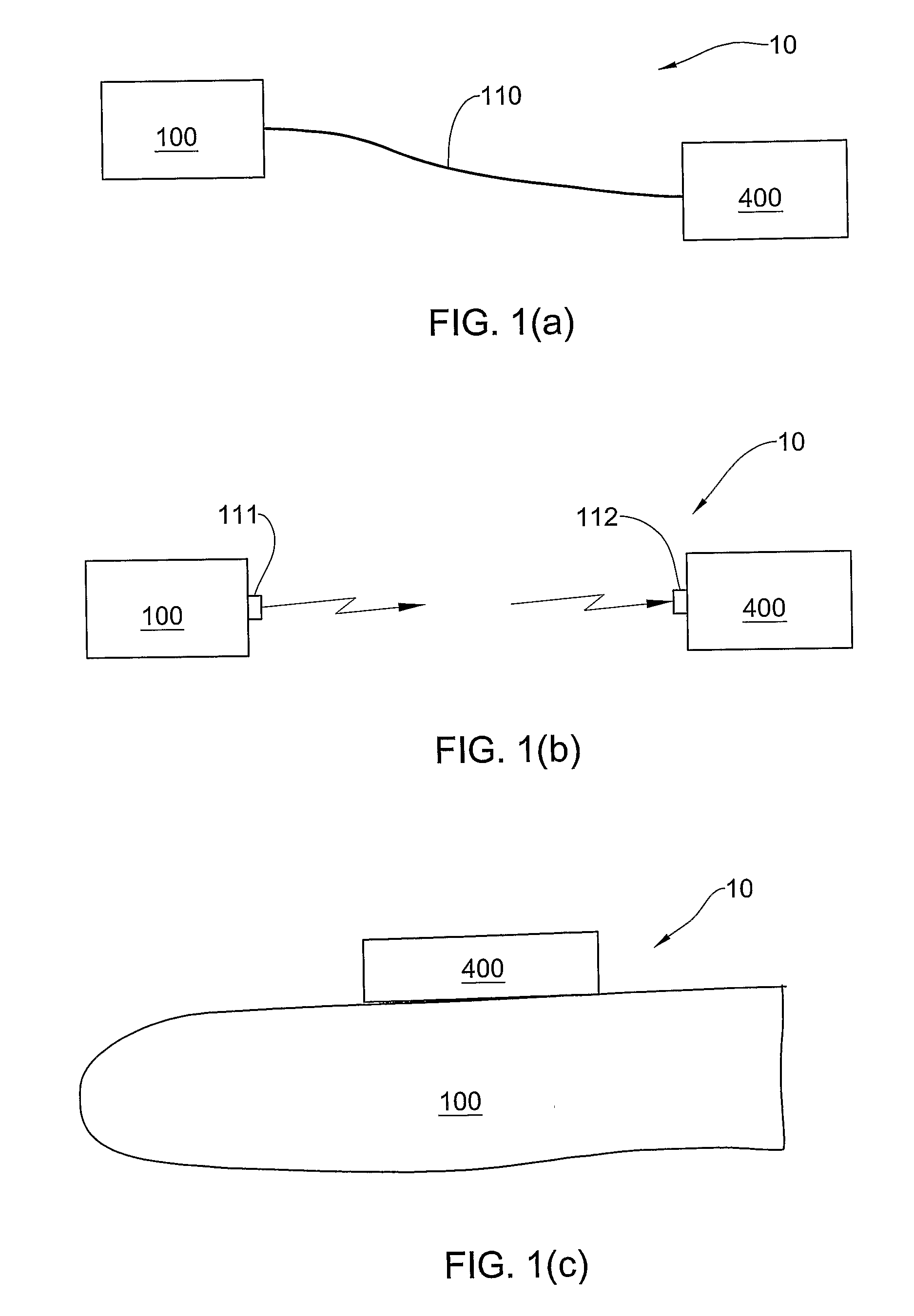Apparatus, System and Method for Determining Cardio-Respiratory State
a cardiorespiratory and non-invasive technology, applied in the field of cardiorespiratory status diagnosis and shock, can solve the problems of lactic acid production, poor efficiency, and inability to sustain efficient aerobic oxygen production of cells, and achieve rapid yet accurate readings, avoid damaging consequences, and improve the monitoring of cardiorespiratory.
- Summary
- Abstract
- Description
- Claims
- Application Information
AI Technical Summary
Benefits of technology
Problems solved by technology
Method used
Image
Examples
first embodiment
[0137]the system of the present invention is illustrated in FIG. 1(a), and is generally designated with the numeral 10. The system 10 comprises a sensing apparatus 100, operatively connected to a user interface in the form of the processing and display unit 400, via a cord 110 through which data obtained by the sensing apparatus 100 is fed for processing and display, and optionally commands are transmitted to the apparatus 100 by the unit 400. For example, the cord may be a fiber optic cable, a bus or an electrical cable. Alternatively, and as illustrated in FIG. 1(b), the cable may be replaced or supplemented with a wireless transmitter and receiver system, 111, 112, in the apparatus 100 and the unit 400 for exchanging data and commands between the two elements of the system. Such a transmitter and receiver system may be infra-red based, or radio based for example, or may make use of any other suitable transmitting and receiving technique. The processing and display unit 400 may be...
PUM
 Login to View More
Login to View More Abstract
Description
Claims
Application Information
 Login to View More
Login to View More - R&D
- Intellectual Property
- Life Sciences
- Materials
- Tech Scout
- Unparalleled Data Quality
- Higher Quality Content
- 60% Fewer Hallucinations
Browse by: Latest US Patents, China's latest patents, Technical Efficacy Thesaurus, Application Domain, Technology Topic, Popular Technical Reports.
© 2025 PatSnap. All rights reserved.Legal|Privacy policy|Modern Slavery Act Transparency Statement|Sitemap|About US| Contact US: help@patsnap.com



